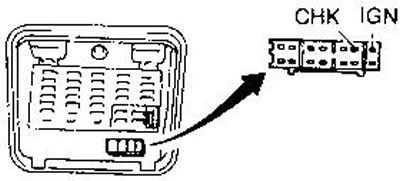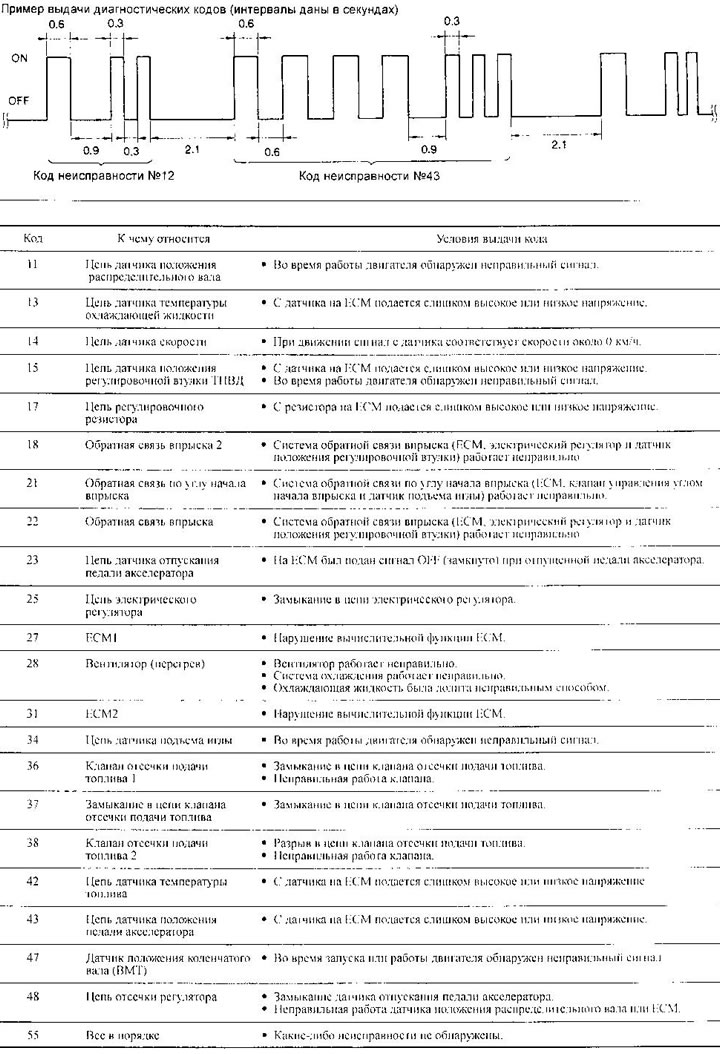

Malfunction indicator
Malfunction indicator (MIL — Malfunction Indicator Lamp) lights up when the ignition is turned on to check the lamp. After starting the engine, it should go out.
If, after switching on the ignition, the signaling device does not light up, it is necessary first of all to check the lamp and the contacts in the signaling device circuit.
If after starting the engine, the MIL does not go out or flashes irregularly, it may be caused by the accumulation of water in the fuel filter, drain the water from the filter.
Switching diagnostic modes
Diagnostic Mode I: set immediately after the ignition is switched on (fault warning lamp test). After starting the engine, the warning device will issue a warning about detected malfunctions.
Diagnostic Mode II: when the engine is not running and the ignition is on, the warning device displays the results of self-diagnosis. After starting the engine, the MIL does not function.
Switching from mode I to mode II back is possible only when the engine is not running and the ignition is on. To do this, it is necessary to close the SNK and IGN contacts of the diagnostic connector with a suitable conductor for at least 2 seconds.
If the ignition is turned OFF in diagnostic mode II, power will be removed from the ECM after about 5 seconds.
After the ignition is switched on, mode I will be automatically set.

Diagnostic Mode I - Fault Warning
If a malfunction is detected in the circuits covered by the self-diagnosis while the engine is running, the malfunction indicator lights up and the malfunction code is stored in the ECM memory. If the next time the engine is started, the malfunction is not confirmed, the warning lamp will not light up, but the code will remain in the memory. If a malfunction occurs three times in a row, MIL will be a handful even if it is absent. To turn it off, it is necessary that the malfunction is absent during three consecutive engine starts. The fault code can be called up in diagnostic mode II for 40 engine starts after the fault no longer occurs.
Diagnostic mode II - output of self-diagnosis results
In this mode, fault codes are issued, for which the fault indicator flashes. Long flashes (0.6 s) indicate tens, short (0.3 s) - units (see fig.).

The issuance of code 55 indicates that there are no malfunctions.
And in this mode, it is impossible to determine whether a malfunction exists at the moment or it has occurred in the past. For such diagnostics, a proprietary CONSULT device is required, which is connected via the diagnostic connector.
Erasing fault codes
Fault codes are erased from memory when switching from diagnostic mode II to mode I. When the battery is disconnected, the codes are stored in memory for about 24 hours.